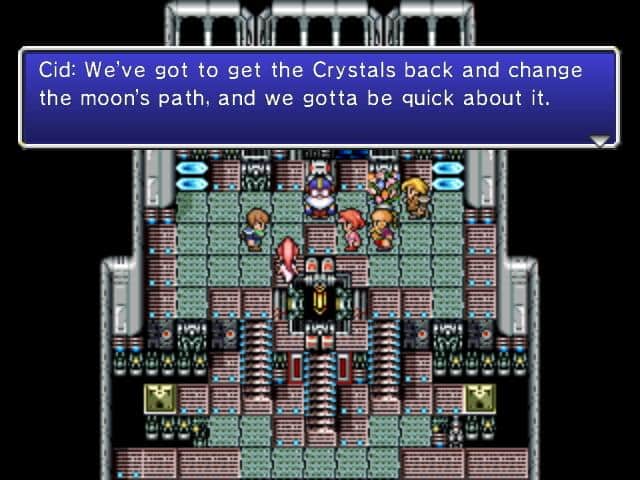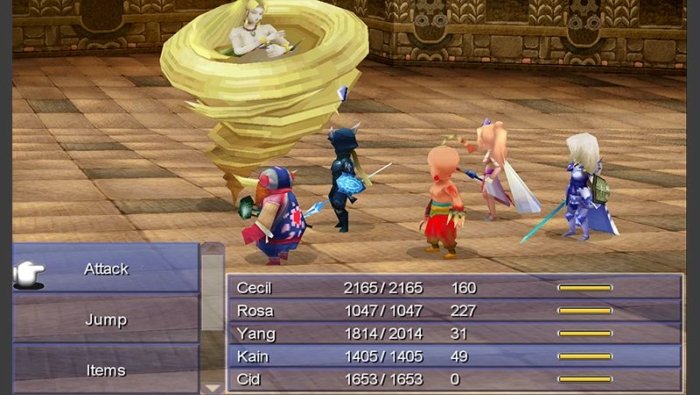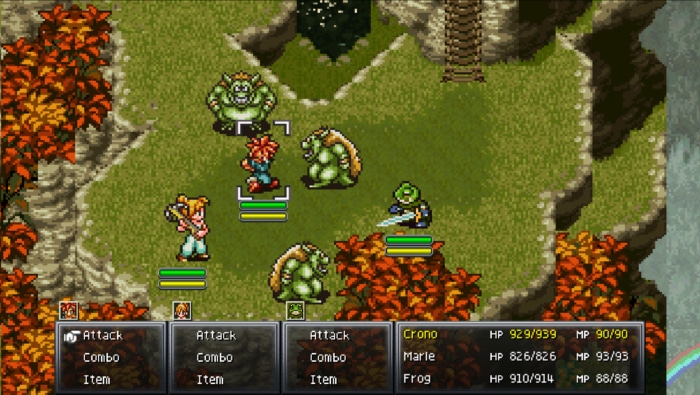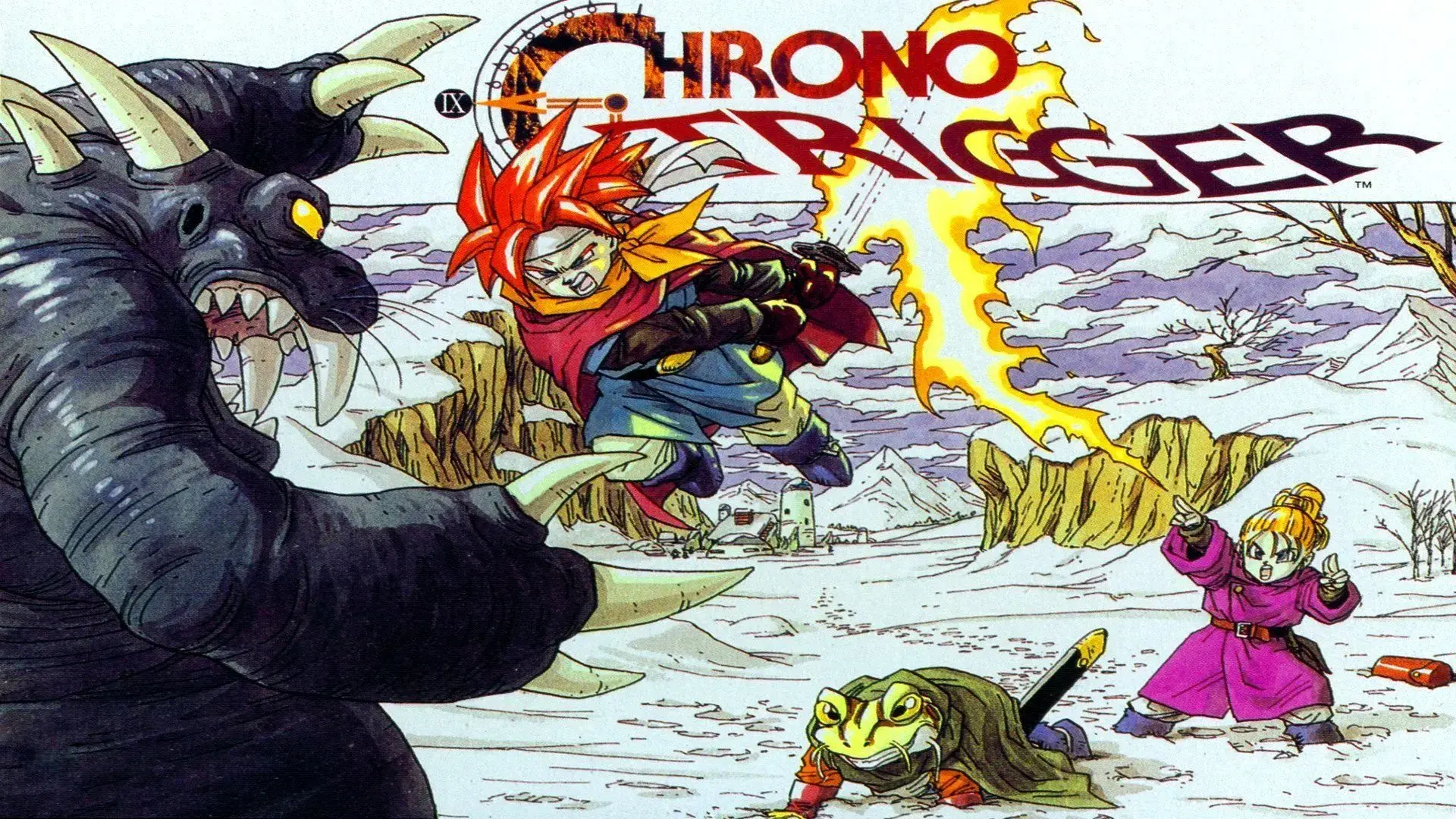The Complete History of Role-Playing Games (RPGs): Part 7 – A Burst of RPGs
Ever wondered where the idea of character levels or XP came from? Why fantasy is final? What RPGs looked like before graphics, or what the first massively multiplayer games were like to play? Here at Ultimate Gaming Paradise, we’ve got all those answers and much more in our series delving into the history of role-playing games.
With an industry that’s now very aware of the concept of the role-playing game and the fans dedicated to the genre, it’s time to go nuclear…
Episode Seven: A Burst of RPGs
As the 1980s were being left behind and the 1990s were finding their feet, RPGs crept out of the shadows. What was once a very niche market—held up by geeks and nerds and grown men who lived in their mother’s basements—was becoming something a little more generally respected. Even girls were playing RPGs!
Hideous stereotypes aside, that was the feel of the genre back in those days. No one thought anything bad about suggesting that RPGs were a boy-thing, nor that dressing female warriors in bikini chainmail was anything but reasonable armour.
It was a time that still leaned heavily on Conan the Barbarian, the Dragonlance Chronicles, and Lord of the Rings—but it was finally growing up.
Sega Megadrive vs. SNES vs. home computers
The early nineties was a time before Playstations and Xboxes. Back then, there were four paths that were chosen by gamers. They were:
- Super Nintendo Entertainment System (SNES)
- Sega Megadrive / Genesis
- Amiga 500
- MS-DOS-based PC
There were other outliers of course, such as the Atari ST and Apple Mac, but these were low in popularity at the dawn of the 1990s. In truth, you were either a strong advocate of one of the four listed, or you were falling behind, especially when it came to RPGs.
There was little crossover. Some games did exist on multiple platforms, but as a whole, games were hardware-specific, leading to some strange divergence of fan bases. SNES owners will remember the time as an era of Final Fantasy and Secret of Mana, leading into Chrono Trigger; Megadrive cousins will recall with fondness Phantasy Star II and III, Sword of Vermillion and Warriors of the Eternal Sun; Amiga fans had Dungeon Master, Eye of the Beholder and Black Crypt; while PC users scrabbled about, supplementing their wide range of rogue-likes with established series like Might and Magic, and Ultima.
It was a joyous time to be an RPG fan.
Changing the face of gaming
It’s easy to think of the 1990s as an established era for gaming, but in reality, the industry was still very much a child. The 1980s had players flocking to arcades, willing to shove coins into hungry machines for short bursts of entertainment. Playing at home followed a similar trend for the most part, with three-lives-based action games the norm.
Role-playing games, with their rich storylines and in-depth character growth, were a completely different class of title, demanding hours and hours of dedicated gameplay before completion. It wasn’t unusual for players to suck their entire spare time into a good RPG, behind closed doors day after day, as they were taken into a different world.

Quite a far cry from the days of Donkey Kong.
Almost every other game genre started to take from the RPGs of the time, ‘borrowing’ various features in the hope that it would give their game something to raise it to the top of the pack. Car games began to care about car customisation and statistics, arcade games expanded and developed their storylines, and puzzle games took to worldbuilding to set their logic problems to a flavourful backdrop.
Not only that, but publishers were keen to back the RPG genre, and the number of games coming out simply exploded, offering more hours of gameplay than anyone could possibly manage. RPG fans finally had a choice—and enough entertainment to mean they never had to leave their bedrooms again!
Learning to read with RPGs
It is the dawn of the fifth epoch, where humans and elves have come to live in a tentative harmony…
>>NEXT
Tied with the impervious bonds of the Nuka-chain, the Dark Lord, Kalkaoloth, is defeated but not destroyed…
>>NEXT
On Amaritai, the peace brings with it new technologies, including the great continental rail transit. There, one of the lowly workers finds a crystal shard, buried deep in the soil of the Everlost Wasteland…
>>NEXT
Sprawling paragraphs of narrative such as these were part of the norm when playing RPGs in the early 90s. The technology of the time was a long way from the lip-synching spoken narrative that we enjoy today, and with in-depth storylines to convey, there was only one way to do so—massive amounts of on-screen text.
This was an era where playing an RPG meant hours of reading, usually peppered with the repeated hammering of whatever button made the words scroll faster and jump quicker onto the next page, followed by a little wincing and swearing when you realise you’ve skipped past something important, and you have to either trigger the whole speech again—or accept that it is lost to you forever and hope to make sense of it all later on.
It was also a time when people genuinely used RPGs as an enticement to learn to read. Plenty of enthusiastic gamers and publications would tout the RPG boon as something that encouraged reading as if Final Fantasy IV was a replacement for a year of English lessons. It wasn’t at all unusual to hear parents convincing themselves that it was OK for little Johnny to spend fourteen hours a day on his SNES. “It’s helping him learn to read,” one would say, and, “oh, yes, Simon is the same, he’s actually considering picking up a book next,” would come the nervous-but-enthusiastic response.
Hmm…
Whether the RPGs of the time made passionate readers of a generation of console gamers or not, it is true to say they did contain a hell of a lot of text, and not much of it was of any great quality.
The problem was twofold.
First, the writers of these long storylines were rarely fiction-professionals. With the industry still in its early days, the concept of a dedicated and professional game-narrative writer simply wasn’t there. The scripts were often written by people whose skills were more towards programming or level design. While they had the desire to form an engaging story, they didn’t have the practice of a fantasy author.
The second was to do with translation. The English speaking world was a large market and encouraged game developers the world over to have a go. Often the translations were poor, sometimes they were utterly non-sensical, especially when coming from the huge Japanese market. It was doubtless the same in the other direction, with Japanese scripts for English games laughable.
Still, despite being often embarrassingly cringe-worthy, there was enough brilliance behind the games of the time to mean a lot was forgiven and script mistakes became a beloved part of the genre, enjoyed by spoony bards everywhere.
The crowning jewels
It would be near impossible to go through all the RPGs of the early 1990s. The volume of titles released makes the task overwhelming enough, but there are definitely some crown jewels—games of such magnificence that they have to be given a mention.
Final Fantasy IV
Released in North America as Final Fantasy II (yeah…), FFIV still stands today as one of the best examples of the genre. It has a storyline that is immediately engaging, with characters we actually care about. It is the game that brought real-time (rather than turn-based) combat to the wider world with its active time battle system, and upgraded the look and feel of RPG games for a new generation.

It is a testament to the strength of the FFIV characters and story that it has been remade and remastered a number of times—with ports to newer consoles and systems, still drawing players in three decades after its first release.
Sword of Vermillion
The SNES was seen as the RPG console of the time (for good reason) but that didn’t mean the Sega Megadrive/Genesis lagged behind. While it lacked the big names like Final Fantasy, Dragon Quest and Secret of Mana, the Megadrive had some epic titles—one of which was Sword of Vermillion.
This one-character RPG had a great storyline and was an immersive experience that sucked in players for many long late-night sessions. Utilising multiple view modes, and taking inspiration from a range of games before it, Sword of Vermillion managed to merge these ideas into an engrossing game in its own right.
Secret of Mana
Secret of Mana (again, on the SNES) brought action RPGs to the console. With a bright colour palette, real-time combat and even a multi-player mode, in 1993, Secret of Mana broke the mould for JRPGs of the time and opened the doors for many things to come.
There’s definitely a touch of Final Fantasy here, which is no surprise given the game’s credentials, but it takes a strong sidestep to carve its own niche and develop a successful series in its own right.
Ultima VII
The Ultima series reached a high point with the seventh game, bringing a host of new interface and mechanics upgrades. In Ultima VII, mouse controls properly augmented the keyboard, the grid-like tile movement system became more fluid and, most importantly, a switch to real-time action.
Like other successful games of the era, Ultima VII drew in fans thanks to its strong approach to storytelling, where a more Western sensibility leads to religious groups, dark murders and insane mages.
Dungeons and Dragons: Warriors of the Eternal Sun
Another Sega Megadrive exclusive, Warriors of the Eternal Sun brought the legitimacy of the D&D brand to a unique and very enjoyable game.
Not without its naysayers, Warriors of the Eternal Sun is often overlooked, but the game remains a high point for the Megadrive’s RPG fans. It uses multiple game modes, with 3D dungeons that offer Dungeon Master-like interactions, and isometric wilderness exploration that’s more like the JRPG standard of the time. Add to that the familiar stat system of Dungeons and Dragons, and Warriors… had a lot to like.
Chrono Trigger
Save the best for last? When it comes to the first half of the 1990s, no RPG makes more of an impact than Chrono Trigger. This SNES classic was, quite simply, the perfect RPG of its time.
In 1994 the PlayStation was released. As we will see in later articles, this was the point in the mid-nineties that changed the face of RPG gaming forever. Chrono Trigger found the perfect window to be released, somehow unwittingly marking the end of the era, and capping it with a shining bejewelled crown.
It is difficult to pinpoint exactly what makes Chrono Trigger so brilliant. The time-travel-based storyline is definitely a high point, making brilliant use of location and history to present a unique story; the development team, featuring luminaries from the Final Fantasy, Dragon Quest and Secret of Mana series, as well as the creator of Dragon Ball, was a supergroup of JRPG designers; the characters were well-formed and beloved, and each of them was given their own dedicated subplots; the battle system was a refined version of Final Fantasy’s ATB system, already well-regarded; the music was developed by the master of JRPG tunes, Nobuo Uematsu; and the game invented the idea of ‘New Game Plus’ to enhance longevity.

Maybe it was the fact that Chrono Trigger was also very difficult to get hold of, especially in the second-hand market where copies were like bags of gold dust.
Any of those reasons, and probably a combination of them, combined to make Chrono Trigger simply the very best example of its era. Whatever it is, there’s no doubt that the love for Chrono Trigger is huge, and rightfully so.
Changing of the guard
The SNES vs. Megadrive wars were long fought and hard. The Amiga vs. ST vs. MS-DOS PC wars were similarly brutal, but all was forgotten and swept away when Sony entered the arena.
The Saturn came out to supersede the Megadrive, the N64 would soon arrive to cement another generation of Nintendo fans, home computer users found a substantial new operating system in Windows 95, but none had quite the impact of the Sony PlayStation.
It marked the end of this joyous age of role-playing games, but it opened up something altogether better.
Coming next…
Taking a side-step away from console RPGs, we explore the other massive technological enhancement of the time and its effect on role-playing games. Enter… the internet. With it, the idea of a true multiplayer experience.

